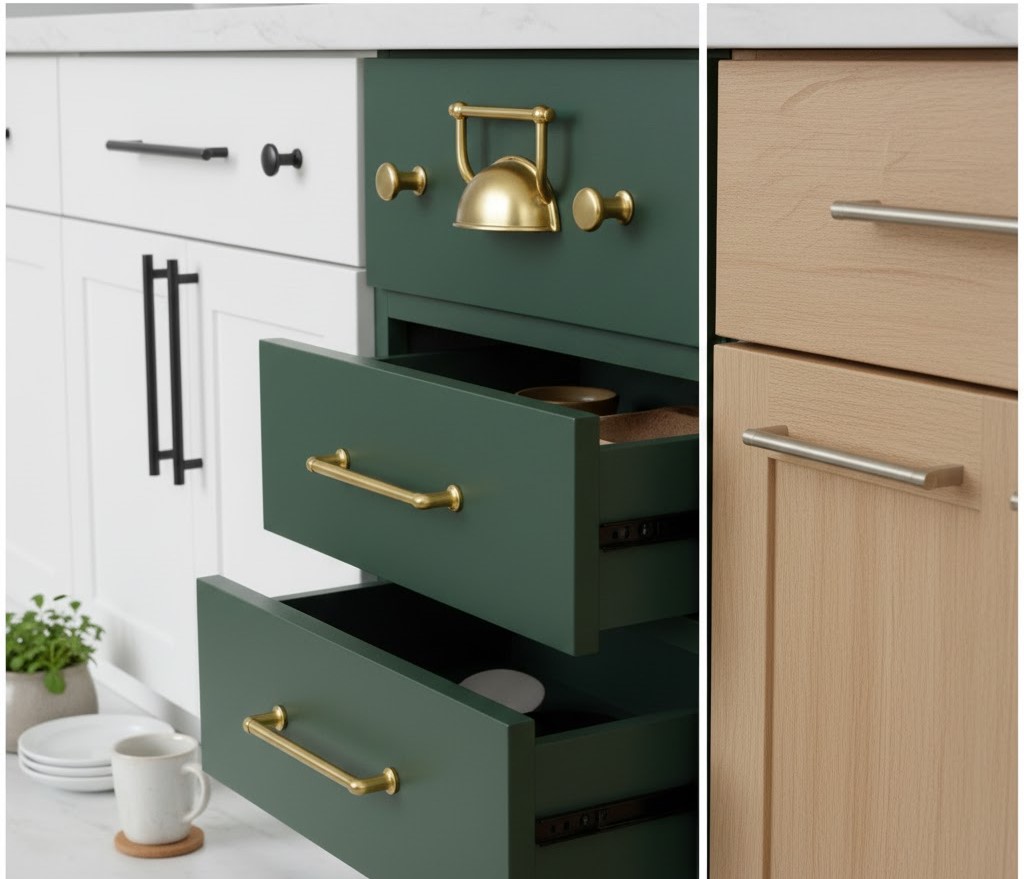Introduction: The Jewels of the Kitchen
The design of a kitchen is often judged by its major elements: the countertops, the cabinetry, and the appliances. Yet, the true finishing touch—the element that dictates both functionality and aesthetic style—is the Kitchen Cabinet Hardware. These often-overlooked components, including knobs, pulls, and hinges, are the unsung heroes of the room, dictating how easily you interact with your storage and providing the visual "jewelry" that completes the design. Selecting the right hardware requires balancing durability, ergonomic functionality, and design compatibility. A complete guide to these essential components is crucial for any successful kitchen renovation or build, ensuring the final result is both beautiful and built to last.
Knobs: The Classic and Versatile Choice
Knobs are the traditional choice for cabinet doors and offer incredible versatility in design. Typically small and circular, they require only a single screw for mounting, making installation simple and forgiving. Knobs are particularly effective in smaller kitchens or on upper cabinets, where a less imposing aesthetic is desired. They come in an astonishing variety of materials, including ceramic, glass, wood, and all manner of metal finishes like brushed nickel, bronze, and polished chrome.
The current trend sees knobs used to create contrast or to introduce an unexpected material. For instance, pairing a sleek, minimalist flat-panel cabinet with a textured stone or crystal knob can elevate the entire look. When selecting knobs for your Kitchen Cabinet Hardware, ensure they are comfortable to grip. While a purely decorative knob might look appealing, one that is too small or awkwardly shaped can be frustrating to use multiple times a day. Their simple structure makes them extremely durable, requiring only the stability of the mounting screw to function reliably.
Pulls: The Ergonomic and Modern Solution
Cabinet pulls, often called handles, are generally longer pieces of hardware that require two mounting screws, providing a wider, more substantial grip. Pulls are favored in modern and contemporary kitchens for their clean, linear appearance, and are especially practical for drawers, which require more force to open, especially when heavy items are stored inside. Functionally, pulls distribute the stress of opening over a larger area of the cabinet face, which can be advantageous for the longevity of the cabinet material itself.
The latest trends in pulls involve long, slim designs, often spanning the width of the drawer or the door itself for a striking visual effect. Popular styles include bar pulls, which are cylindrical and stand slightly proud of the surface, and recessed pulls, which are cut directly into the cabinet face for a truly handle-less, streamlined look. When integrating pulls into your Kitchen Cabinet Hardware design, consistency in center-to-center measurement is vital, as this dictates the drilling pattern. Choosing a pull length that is proportional to the cabinet size is also key to achieving a balanced and polished final aesthetic.
Hinges: The Foundation of Cabinet Functionality
While knobs and pulls draw the eye, hinges are the structural foundation that dictates the operational quality of the cabinet. They may be less visible, but their importance cannot be overstated. The two primary categories are visible (external) and concealed (internal) hinges. Visible hinges are often chosen to match the finish of the knobs and pulls, contributing to the overall aesthetic in traditional or farmhouse-style kitchens.
However, the dominant trend for modern Kitchen Cabinet Hardware hinges is the concealed hinge, specifically the European-style hinge. These hinges mount entirely inside the cabinet box, leaving a clean, seamless look on the exterior. Crucially, they offer complex adjustability in three directions, allowing for perfect door alignment. The most valued feature today is the integrated soft-close mechanism. This feature uses hydraulics to gently and silently ease the door shut, preventing slamming, reducing wear and tear on the cabinet box, and significantly improving the user experience. Investing in high-quality, fully adjustable soft-close hinges is a non-negotiable step toward a premium kitchen experience.
Selecting Finishes and Ensuring Durability
Choosing the material and finish for your Kitchen Cabinet Hardware is a major design decision. Beyond aesthetics, durability in a high-humidity, high-use environment is essential. Finishes like satin nickel, stainless steel, and oil-rubbed bronze are perennially popular due to their ability to resist fingerprints and corrosion. Matte black is a significant trend, offering a bold contrast that anchors light-colored cabinetry.
A common mistake is mixing too many different hardware styles or finishes. While mixing knobs and pulls is generally acceptable (knobs on doors, pulls on drawers), maintaining a consistent finish and style family ensures a cohesive look. When planning your purchase, always consider the quality of the base metal. Solid brass or stainless steel will outperform zinc alloys in terms of weight, feel, and longevity. The combination of high-quality base materials and durable finishes will ensure your hardware looks stunning and functions flawlessly for the lifetime of your kitchen. For sourcing premium, durable hardware that meets these professional standards, businesses often turn to specialized providers like those found at https://www.impusa.com/.





Comments